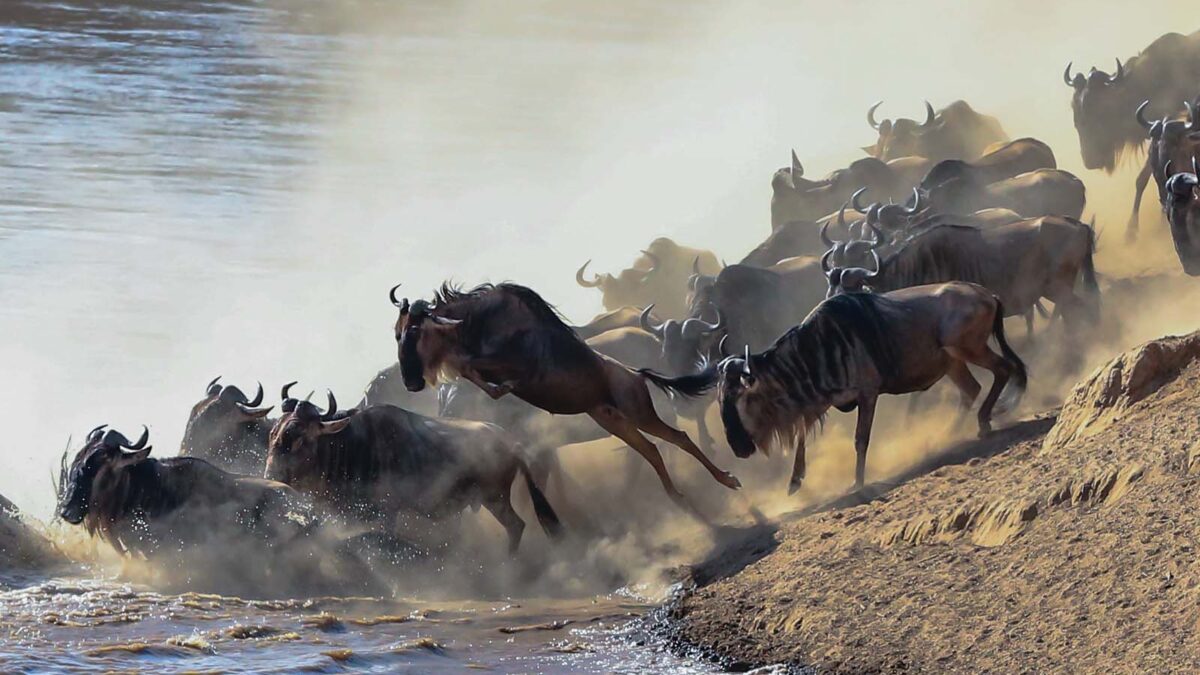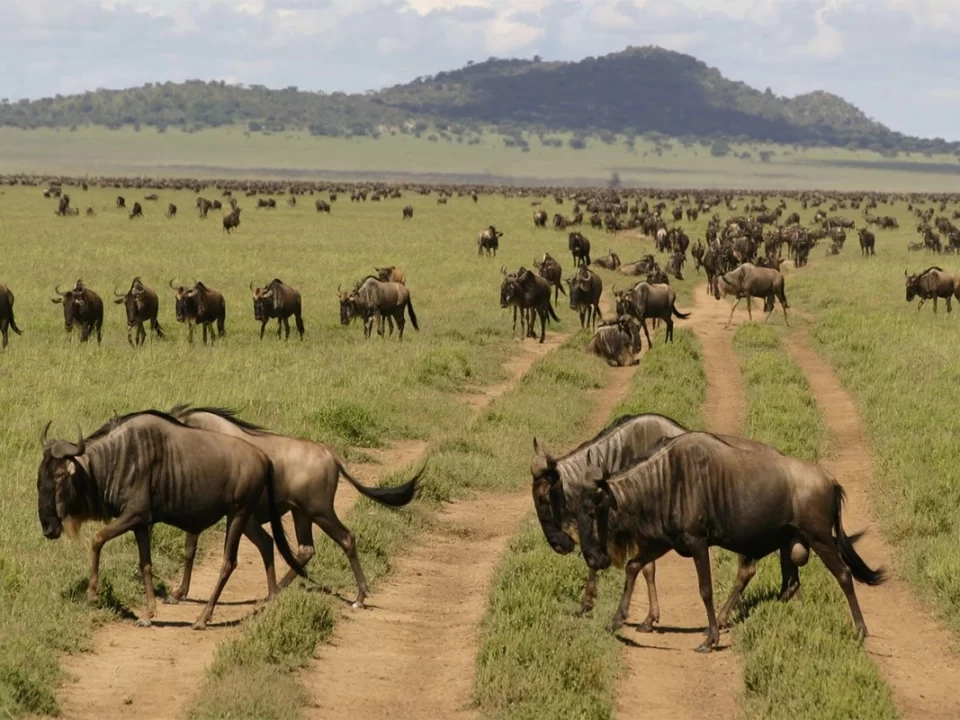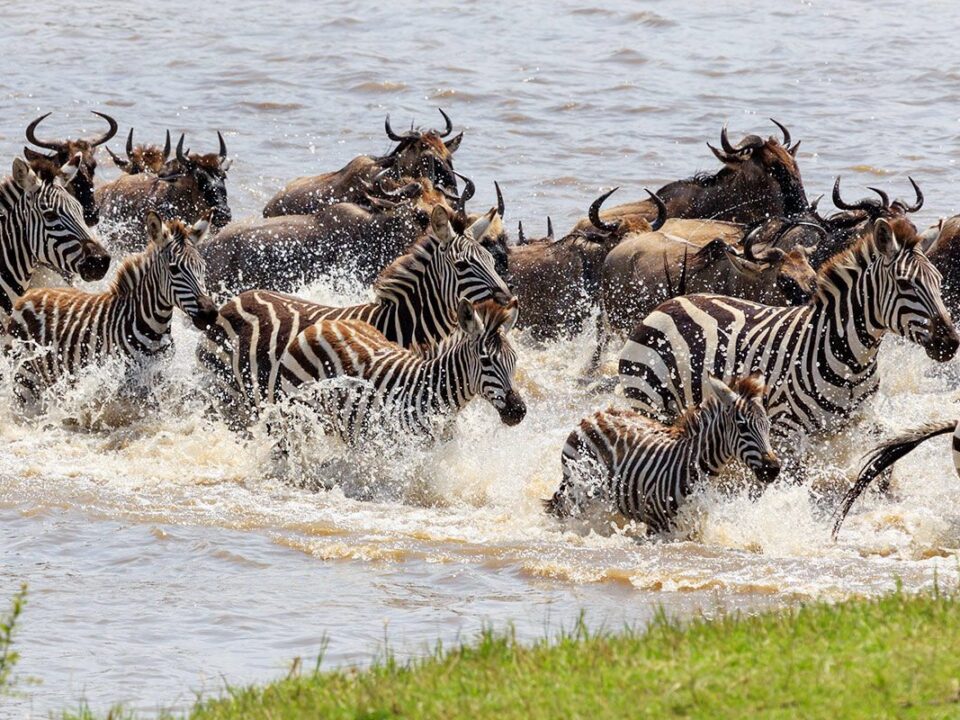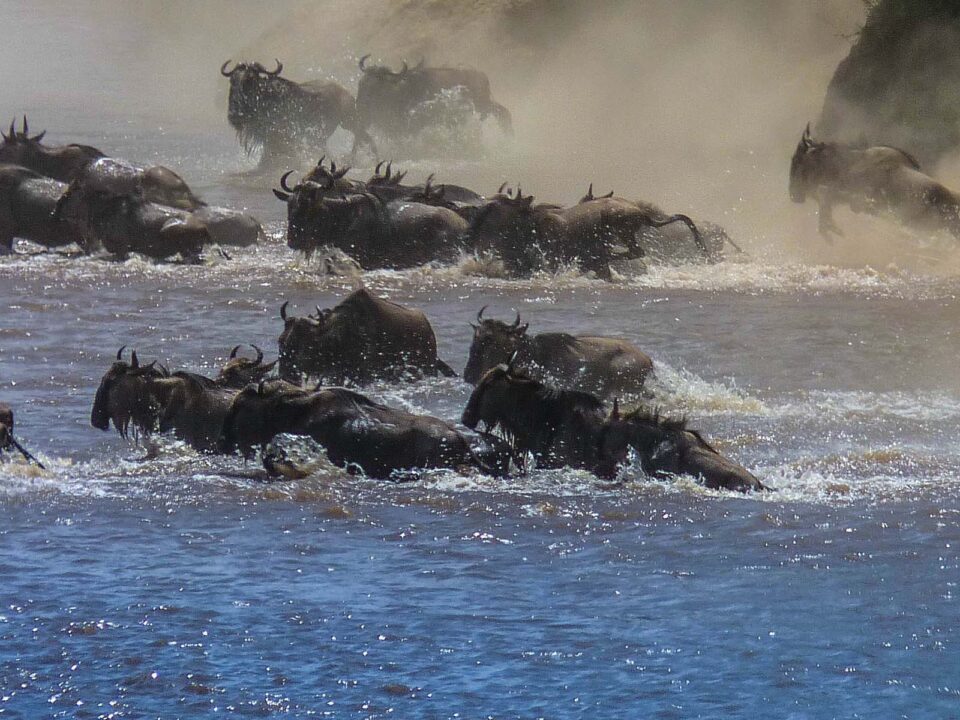Safari in February Wildebeest Migration Pattern

Uganda Gorillas & Rwanda Golden Monkeys Via Kigali
December 5, 2023
Gorilla Tracking Holidays via Kigali to Bwindi forest
December 5, 2023February’s Wildebeest Migration Pattern Safari: A Serengeti Adventure
Embark on an extraordinary journey with a Safari in February to witness the fascinating wildebeest migration pattern in the renowned Serengeti National Park. The Southern Serengeti, Ndutu, and Ngorongoro Conservation Areas offer abundant grazing, retaining the herds in the far south. February marks the peak of the rut, a thrilling spectacle where male wildebeests vie for the opportunity to mate with receptive females.
The drama unfolds as the fertile females eventually reach the Mara, Talek, and Grumeti Rivers months later, heavily pregnant—a testament to their incredible journey. With the onset of rains, the herds move northwest, traversing the granite outcrops of Simba and Moru koppies, advancing into the woodlands of the hilly country west of Seronera towards Lake Victoria. The annual rut unfolds, witnessing half a million cows mating in less than a month, congregating in the woodlands and plains of the Serengeti’s Western Corridor. The peak of the rut is influenced by the lunar cycle, with May/June’s full moon presenting optimal viewing for those seeking vibrant action.
While territorial males engage in seemingly fierce battles during the rut, the actual violence is limited. Surprisingly, males have little influence over mate selection, as it is the females who play a decisive role in the mating process.
Safari Highlights in February in Serengeti, Tanzania:
February emerges as the peak calving season for wildebeests, offering a remarkable spectacle of baby animals being born and heightened predator activity. The landscapes transform into lush, verdant expanses, albeit posing a challenge for animal sightings compared to the dry season.
Why Travel to Serengeti in February:
February is rightfully deemed the action-packed month in Serengeti, featuring an abundance of newborns, intensified predator hunts, and vibrant greenery with reduced dust and fewer tourists. The Northern Circuit of Tanzania, particularly the Serengeti, stands as an exceptional destination during February. The Serengeti, particularly from January to March, is unparalleled, with February marking the calving month for the Great Wildebeest Migration.
This period witnesses approximately 500,000 wildebeest births in less than a month, transforming the Serengeti into Africa’s prime location for cheetah sightings. The concentration of predators on the vast plains is astonishing, making it a hotspot for safari enthusiasts. Additionally, camps in the Ngorongoro Conservation Area, an extension of the Serengeti, offer exceptional cultural interactions and walking experiences. Crafting a trip around the Serengeti and Ngorongoro in February promises an outstanding safari experience. Trek Africa Expeditions is at your service, ensuring you relish a Safari in February, exploring the wildebeest migration pattern while seamlessly combining your holiday with mountain gorillas in Uganda or Rwanda.




